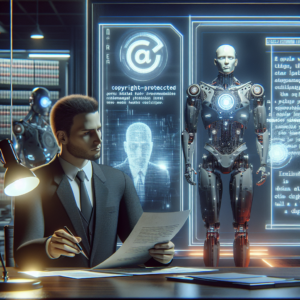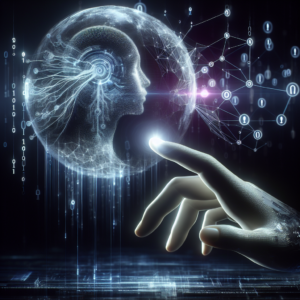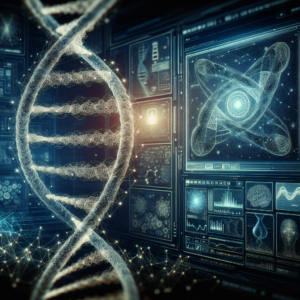ChatGPT: Everything You Need to Know About the AI-Powered Chatbot
In recent years, artificial intelligence has made remarkable strides, with chatbots leading the way in transforming how we interact with technology. One standout in this field is ChatGPT, a revolutionary AI-powered chatbot that has garnered significant attention. This blog post delves into everything you need to know about ChatGPT, from its inception to its practical applications.
What is ChatGPT?
ChatGPT is an advanced conversational AI developed by OpenAI, based on the Generative Pre-trained Transformer (GPT) architecture. This sophisticated model is designed to understand and generate human-like text, allowing it to engage in meaningful conversations. Its versatility makes it suitable for various applications, including customer support, content creation, and personal assistance.
How Does ChatGPT Work?
At its core, ChatGPT uses machine learning techniques to process and generate language. The training process involves two main phases: pre-training and fine-tuning.
1. Pre-training: During this phase, the model is exposed to a vast dataset comprising diverse text from books, articles, and websites. It learns to predict the next word in a sentence, which helps it develop a deep understanding of language patterns, grammar, and context.
2. Fine-tuning: After pre-training, the model undergoes fine-tuning, where it is specifically trained on a narrower dataset with human reviewers providing feedback. This phase enhances its ability to generate coherent and contextually relevant responses.
Key Features of ChatGPT
ChatGPT boasts several features that set it apart from other chatbots:
– Natural Language Understanding: ChatGPT excels in understanding context, nuances, and user intent, enabling it to provide more relevant responses.
– Conversational Memory: The model can remember prior interactions within a session, allowing for more fluid and engaging conversations.
– Versatility: From answering queries to generating creative content, ChatGPT can seamlessly switch between different tasks, making it a valuable tool across various domains.
– User-Friendly Interface: The chatbot is designed to be intuitive, ensuring users can easily interact with it without any technical knowledge.
Applications of ChatGPT
ChatGPT’s versatility opens the door to numerous applications across industries. Here are some notable use cases:
– Customer Support: Businesses are increasingly employing ChatGPT to handle customer inquiries, providing quick and efficient responses that enhance user experience.
– Content Generation: Writers and marketers use ChatGPT to generate ideas, write articles, and create social media content, streamlining the creative process.
– Language Translation: With its strong grasp of language, ChatGPT can assist in translating text, making communication across different languages easier.
– Education: Educators leverage ChatGPT to create interactive learning experiences, answering student queries and providing personalized tutoring.
Benefits of Using ChatGPT
The adoption of ChatGPT comes with an array of benefits:
– Enhanced Efficiency: Automating repetitive tasks allows businesses to save time and allocate resources to more critical functions.
– 24/7 Availability: Unlike human agents, ChatGPT can operate round the clock, ensuring support is always available when needed.
– Cost-Effective: By reducing the need for large customer support teams, companies can significantly cut down on operational costs.
– Improved User Engagement: Its ability to engage users in natural conversations can lead to higher customer satisfaction and retention rates.
Challenges and Limitations
Despite its impressive capabilities, ChatGPT is not without challenges:
– Understanding Context: While it excels at language processing, ChatGPT can sometimes misunderstand nuanced contexts or deliver generic responses.
– Ethical Concerns: The potential for generating misleading or harmful content raises ethical questions about its deployment.
– Dependence on Data Quality: The quality of the training data significantly impacts the model’s performance. Biased or inaccurate data can lead to biased outputs.
Future of ChatGPT
The future of ChatGPT looks promising, with continuous advancements expected in AI research and development. OpenAI and other organizations are actively working to enhance its capabilities, address limitations, and ensure safe deployment. Potential future developments may include:
– More Robust Context Understanding: Enhancements in context-awareness will improve ChatGPT’s ability to engage in deeper and more meaningful conversations.
– Broader Language Support: Expanding the number of languages and dialects supported can make ChatGPT more accessible across diverse user bases.
– Integration with Other Technologies: Combining ChatGPT with other AI technologies, such as voice recognition and augmented reality, could create a more immersive user experience.
– Stronger Ethical Guidelines: As AI’s impact grows, establishing ethical frameworks will be crucial to ensure responsible AI use.
Conclusion
ChatGPT represents a significant leap forward in conversational AI, offering businesses and individuals a powerful tool for enhancing communication and efficiency. As it continues to evolve, its applications will broaden, and its potential will expand. By understanding both the capabilities and limitations of ChatGPT, users can navigate this exciting frontier of technology and leverage its benefits in various domains. Whether you are a business owner, content creator, or simply an AI enthusiast, ChatGPT is certainly worth exploring.



